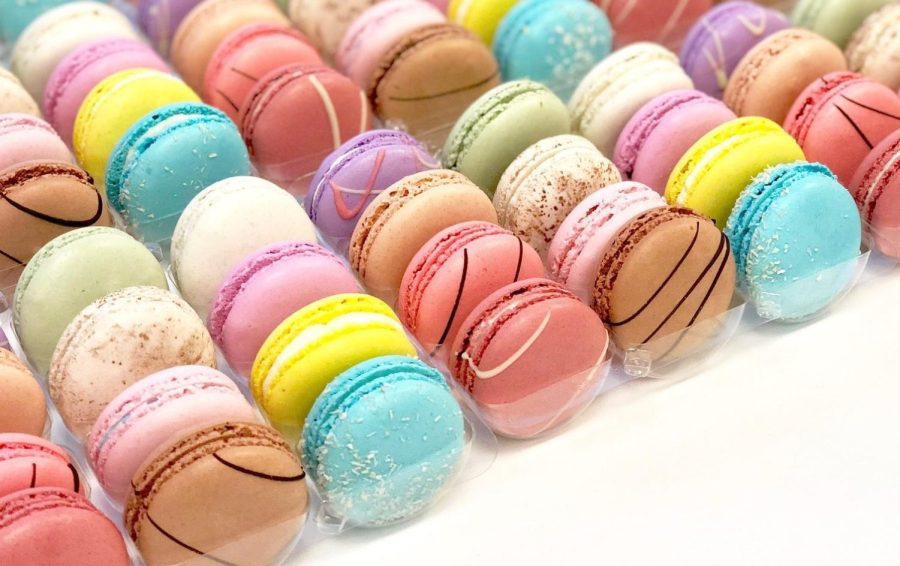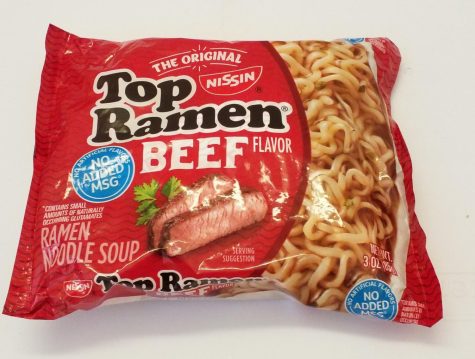A Simple Recipe: Macarons
You’ve only dreamed of making delicious macarons, but now you’re actually going to do it. Here’s what you need.
If you’re reading this article, you probably want to know how to make a macaron or a French macaroon. Although there is some variation with the use of the word macaron, the most common use is the cookie-sandwich style delicacy shown above. Keep reading to find a simple recipe for macarons, good for both beginners and expert bakers. But first, a bit more about this popular French treat.
What’s the difference between a macaron and a macaroon?
You can clearly see the difference between the two foods below:


Both of these desserts used to be known as macaroons. However, a lot of English bakers decided to use the French spelling of macaroon (macaron) instead. Basically, macarons are well-known desserts that have cream or ganache in-between sweet cookies. Meanwhile, macaroons are a different kind of dessert. They are made from coconut and often dipped in chocolate. Although macaroons are also great desserts, they won’t be featured in this article.
What’s so special about macarons?
Macarons are a fancy treat that’s often featured with picturesque grassy lawns and dainty outdoor seating. They are associated so much with the French culture that they are called French macarons. They aren’t too hard to make yourself, meaning you can go and buy a plate from the local bakery, or have lots of fun making some in your home.
A macaron consists of two pieces of sandwich cookies (known as shells) and filling. The shells usually have a crisp exterior, but the inside has a unique chewy texture. The shells shouldn’t be hollow or too thin. As for the filling, there are many different kinds that you can choose based on your preference. Buttercream and ganache are very popular choices. A lot of bakers also choose to coordinate the fillings with the color and/or flavor of the shells.
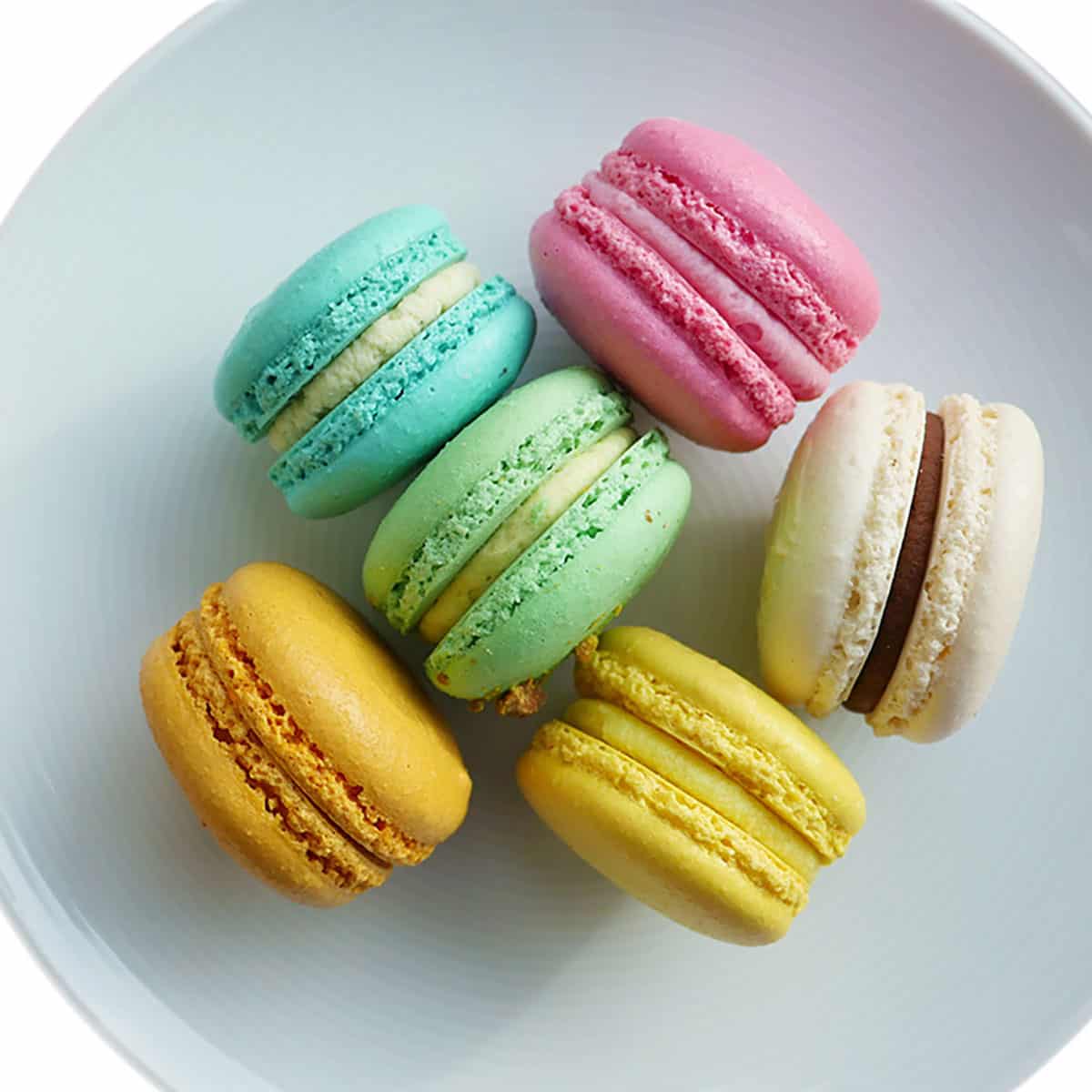
What’s the best macaron recipe?
There are MANY different kinds of recipes for any kind of food. For the macaron, there are even different methods named after countries (Italian, French, and Swiss). French macarons are typical, while Swiss macarons are rarer and Italian macarons are slightly more complicated to make.
Some recipes use standard ingredients, some have vegan versions, and some recipes are altered based on an individual’s preference or allergies. There isn’t a perfect recipe, nor is there any guarantee that you will enjoy the macarons you make. That being said, this article features a simple French macaron recipe that’s still delicious but is easier for beginners to replicate.
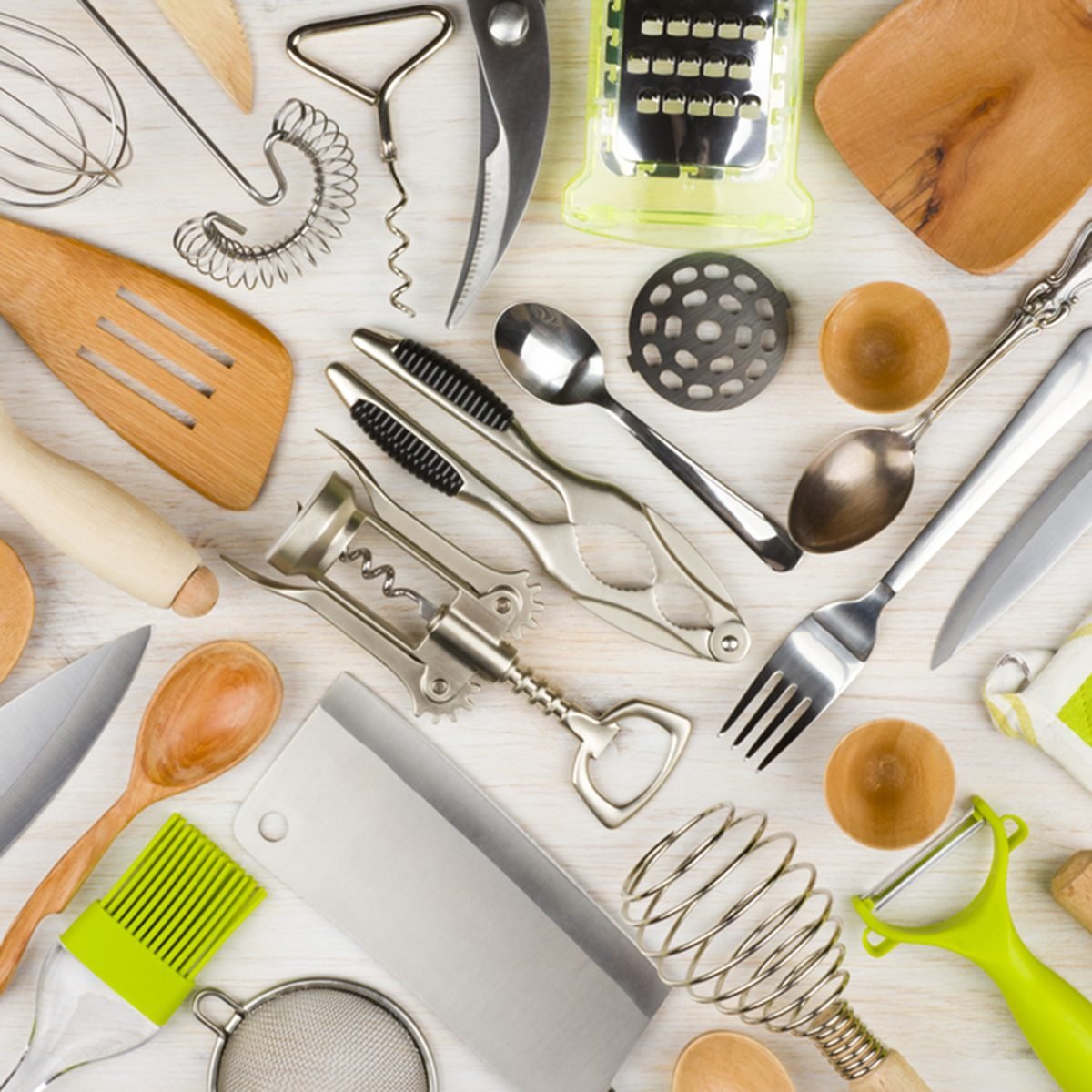 French Macaron Recipe
French Macaron Recipe
So now that you know about macarons and whether you want to make them, let’s get right into it. First, what you need to prepare beforehand.
SUPPLIES:
Bowls: You can use any bowl you have lying around as long as it’s the right size. Keep in mind that plastic bowls may affect the whipping process, so try to use glass and metal bowls.
Measuring Tools: You should have some measuring cups or a scale lying around. If not, it’s not that big of a deal. Of course, getting precise measurements increases your chance of successful macarons.
Electric Mixer: This is really helpful when you need to whip egg whites. You can do it by hand, but it’s slower and tires your arm out.
Sieve: This is for sieving almond flour and confectioners’ sugar. Fine mesh sieves are best so you are actually sieving the material instead of it just falling through the holes.
Piping Supplies: You need a piping bag and tip for when you make the round shape of your macaron shells. (A good size if you’re lost is 1/4-inch round tip.)
Baking Sheets: You need these sheets for when you bake your macarons. Along with these sheets, you can also use parchment paper, a silicone baking mat, or even a macaron-specific silicone baking mat. All of these work just fine.
Oven: This is pretty obvious. Your oven should have a convection setting, which is what you’ll be using to make your macarons.
INGREDIENTS (FOR APPROXIMATELY 30 MACARONS):
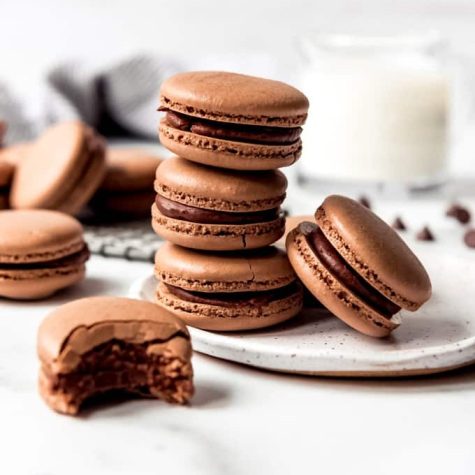 SHELLS
SHELLS
3 egg whites (room temperature)
- You should age egg whites which helps during the whipping process. Here’s an easy way to age the eggs. Put the eggs in a container and cover them with plastic wrap. Poke a few holes in the wrap and put them in the fridge for at least a day before using them. This will dehydrate them, but it isn’t completely necessary. However, ideal macarons use aged eggs.
- Try to make sure that the egg yolks don’t make into the recipe. They will prevent the whipped eggs from reaching the ideal consistency.
1 cup fine almond flour
- If you can’t find fine flour, don’t stress. You can sieve flour until it’s fine. If flour isn’t fine, then mixing and baking will be difficult.
- If you want to make your own almond flour, that’s okay, but be careful. The flour could easily turn into almond butter. I personally think it’s easier to buy a bag from a grocery store, but this is your baking project, so you do you.
1/4 teaspoon cream of tartar
- Weird name? Check. Sounds poisonous? Check. Actually, sort of like a secret ingredient? Check.
- Cream of tartar isn’t a must-have, but it helps a lot. The acidity (don’t be alarmed) helps egg whites retain air so they don’t collapse and ruin your macaron shells.
1 3/4 cup confectioners’ sugar
- Confectioners’ sugar (resembling powdered sugar) isn’t all that special, but it adds sweetness (of course) and bulk to macaron batter.
1/4 cup superfine sugar
- What is superfine? It’s basically sugar that’s finer than regular granulated sugar but not as fine as confectioners’ sugar. (Look for caster sugar if you can’t find superfine, it’s the same thing.)
- Superfine sugar is the perfect size for French macarons, so it’s best not to switch it out for any other size.
- If you can’t find superfine sugar in your local store then try to put granulated sugar in a food processor or blender. It’s slower and possibly messier, but not that hard.
1 teaspoon salt
- This ingredient is optional (I know a lot of these are optional, but salt is really your choice). You don’t even have to measure it out, you can just take a pinch.
1/2 teaspoon extract
- You can use vanilla, almond, or mint extract, depending on what you have available.
2-3 drops of gel food coloring
- This is the fun part. If you want your macarons to be colorful and bright, then go crazy when you’re choosing food coloring. If not, it’s completely fine to leave the macaron its natural color. After all, it still tastes good. (The macaron will be sort of beige if uncolored, in case you’re wondering.)
- Don’t use liquid food coloring, because the liquidy texture might make a difference when mixed with your batter.
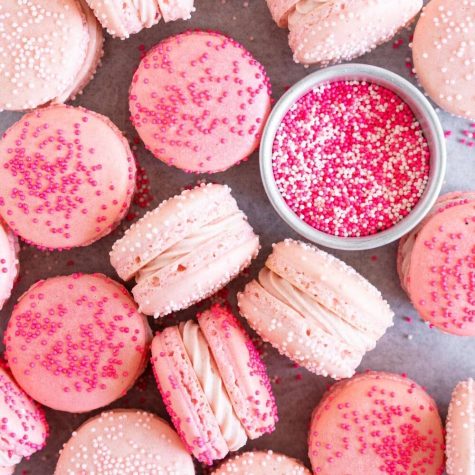 FILLING
FILLING
Macaron fillings vary greatly. It just depends on what you feel like doing that day. There’s no recipe for a filling in this article, but you can make your own easily, or even buy filling.
STEPS:
If you’re ready and have hopefully done all your prep work (making sugar if you need it, preparing supplies, aging your egg whites, etc.), then let’s get started.
1. First, the shells. In a bowl, mix the confectioners’ sugar and almond flour until the mixture is extra fine. Sift through a fine-mesh sieve into another bowl.
2. In another bowl, beat the aged egg whites and cream of tartar. Gradually add salt (optional) and the superfine sugar. It’s easier to use an electric mixer here so it’s faster.
3. Beat the mixture until it forms “stiff peaks.” That means when you lift your mixing tool, it will sort of pull the mixture with it. When it detaches, there should be two “peaks” in the mixture. They are stiff if they don’t droop. If you turned the bowl upside-down, the mixture shouldn’t go anywhere. (Look at the picture for reference.)
4. Now, add your food coloring and extract (if you want). Make sure to add the coloring now, and not when your batter is completely finished. That’s because the finished batter easily “deflates.” When the batter looks smooth and falls off your mixing tool like a ribbon, stop mixing.
5. You’re getting close! Now, mix the material in your two bowls together, in 3 additions. At first, your batter will be dry and thick, but the mixture improves after you add all three amounts of the batter. After that, keep mixing and folding until you reach the perfect consistency: macaronage. (Macaronage: the process of developing macaron batter until it reaches a shiny and smooth consistency that easily creates macaron shells. The batter should move like honey and be unable to retain a solid shape, meaning the surface of the batter will be smooth over time no matter the disruption). Tip: Go slow so you don’t accidentally overmix.
6. Take your piping bag and fill it with the mixture. This can be hard and messy, but there’s no special method. Just put the bag in a cup and fill that cup with the batter.
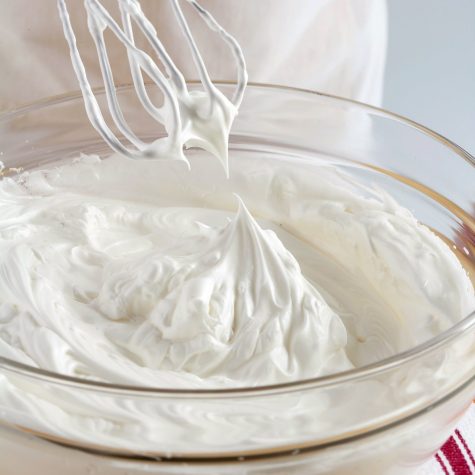
7. Squeeze the mixture into circles on a baking sheet. No one will judge your imperfect circles, but there are some baking sheets and mats with circle templates. You can also draw circles (on the OPPOSITE SIDE) yourself. Tap your pan on a surface (straight up and down so the batter doesn’t move around) to get rid of air bubbles. You can also use toothpicks, they are “safer” if you don’t want to mess up your circles.
8. Leave the batter out for a little bit until the top is dry. This allows macarons to form their signature “feet,” which is the little ruffle along the bottom. If left out for too long, the batter could spread out too much or deflate.
9. Bake the macarons! The temperature doesn’t have to be exact, but I recommend around 325 degrees Fahrenheit (163 degrees Celsius) for 14 minutes.
10. You can tell when macarons are done baking because they form feet. Touch them gently with an object (be careful, they are hot). If the macarons don’t seem solid, they aren’t done. If they are, then you can take them out.
11. Cool them for a while then add the filling. You can put the filling on in any way. Some filling ideas: buttercream (vanilla, chocolate, lemon), frosting, ganache, or salted caramel.
Enjoy!
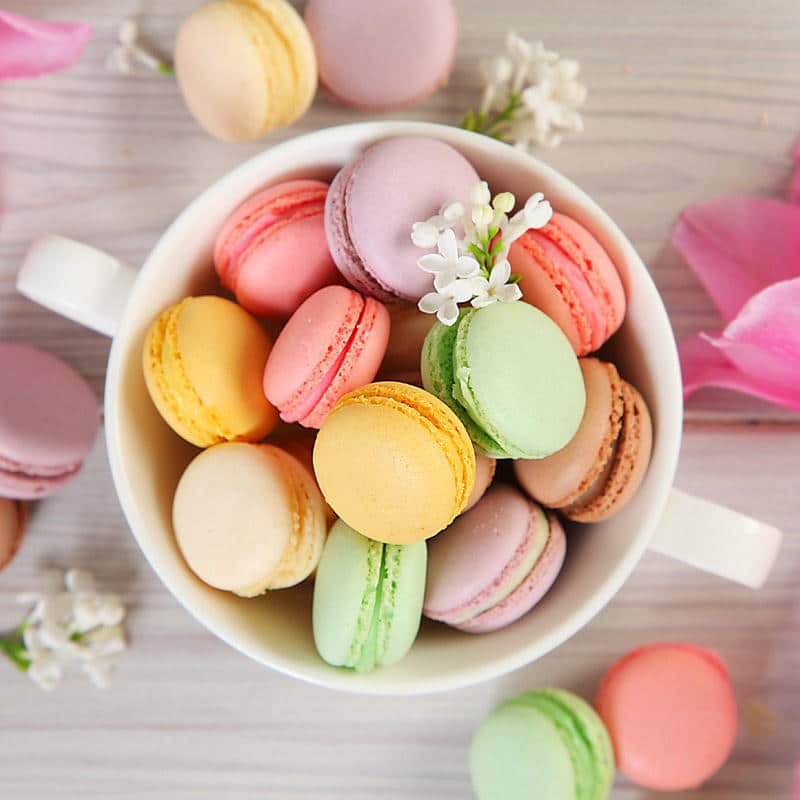
And there you have it, your very own French macarons. Now, decorate them, eat them, give them away, or make even more. Do whatever. I hope you had fun making those macarons, and they turned out better than expected. Now, you know how to make macarons. Good for you!
Thank you for reading to the end! For more amazing articles, please visit canyonechoes.org and support the staff of Canyon Echoes News from Canyon Vista Middle School.

My name is Lily. I'm a seventh-grader at Canyon Vista Middle School. I'm in the Journaling News-Media Production class.
















